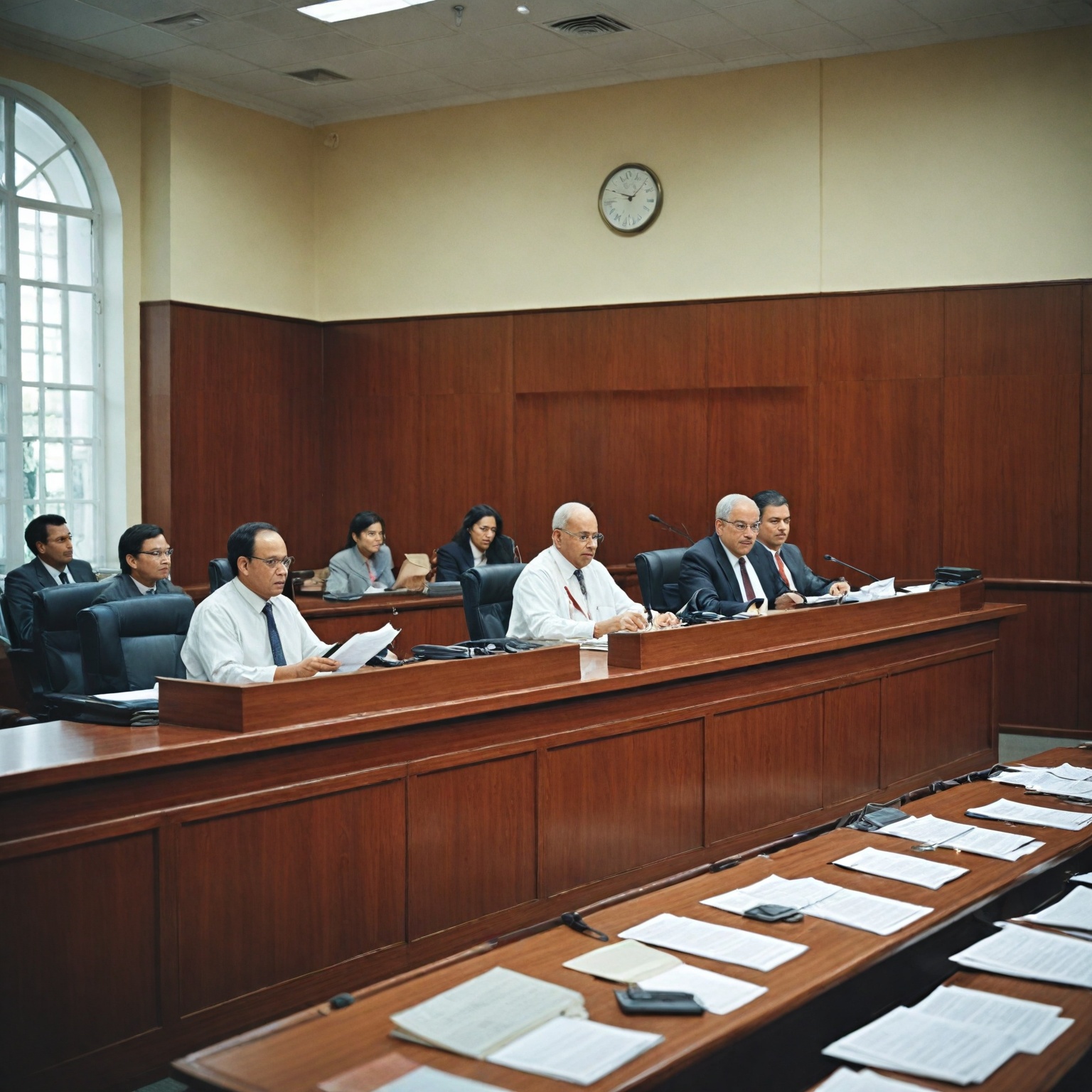Summary
The Goods and Services Tax Appellate Tribunal (GSTAT) represents a pivotal development in India’s indirect tax landscape, designed to provide a specialized and streamlined forum for resolving disputes under the Goods and Services Tax (GST) regime. Established to alleviate the burden on High Courts and ensure uniformity in the adjudication of GST-related appeals, the Tribunal is empowered to regulate its own procedures guided by principles of natural justice rather than the strict Code of Civil Procedure, 1908. Since its phased rollout beginning August 2023, the GSTAT has been positioned to enhance the efficiency, transparency, and fairness of GST dispute resolution across central and state jurisdictions.
Prior to the full constitution of the Tribunal, the absence of a functional GSTAT compelled taxpayers to approach High Courts directly, leading to significant procedural delays, judicial backlog, and challenges in maintaining consistent legal interpretations. Landmark rulings by various High Courts during this interim period have shaped GST jurisprudence, addressing critical issues such as input tax credit eligibility, penalty imposition, appeal timelines, and the scope of interstate taxation under GST laws. These decisions have provided important taxpayer relief but also highlighted the pressing need for a dedicated appellate body.
Despite its promise, the GST Appellate Tribunal has faced criticism related to delayed operationalization, jurisdictional ambiguities, and transitional procedural complexities. Concerns persist over inconsistent interpretations across state benches, stringent limitation periods, and the timing of procedural reforms such as the reduction of pre-deposit requirements in penalty-only appeals. Judicial interventions have been instrumental in safeguarding taxpayer interests during these challenges, ensuring that administrative delays do not result in undue hardship.
Looking forward, the GSTAT is expected to play a transformative role in India’s indirect tax administration by providing authoritative rulings, fostering uniformity in GST law application, and reducing litigation burdens on higher courts. Its evolving jurisprudence promises to clarify contentious provisions related to input tax credits, refund mechanisms, and interstate supply taxation, thereby revolutionizing taxpayer benefits and contributing to a more balanced and predictable GST environment.
Background
The Goods and Services Tax (GST) regime, introduced to unify the indirect tax structure in India, has been marked by significant interpretive and procedural challenges since its inception. Despite being operational for over six years, the GST Appellate Tribunal (GSTAT), a specialized quasi-judicial body established under the GST laws to adjudicate disputes between taxpayers and tax authorities, has yet to become fully functional. This delay has compelled taxpayers to seek justice primarily through High Courts, thereby overburdening the judiciary and causing procedural bottlenecks.
The GST Appellate Tribunal was envisioned as a common forum to ensure uniformity in dispute resolution across the Centre and the states. It serves as the second appellate authority after the first appellate authority and aims to provide an impartial, expeditious, and transparent resolution of disputes under GST laws. The Tribunal is empowered to regulate its own procedures, guided by principles of natural justice rather than the strict provisions of the Code of Civil Procedure, 1908. Flexibility is built into its operations, including provisions for hearing appeals even if members are absent, and mechanisms for administrative convenience such as transfer of members between jurisdictions.
One significant judicial development has been the High Court’s intervention to direct the Central Board of Indirect Taxes and Customs (CBIC) to incorporate specific clauses in orders appealable to the GSTAT, ensuring no hardship is caused to taxpayers due to the non-constitution of the Tribunal. For instance, in the case of M/S Tonbo Imaging India Private Limited, Rule 89(4C) was held ultra vires the Constitution, highlighting challenges in procedural provisions affecting taxpayers. Additionally, the courts have clarified constitutional powers relating to the taxation of interstate transactions and exports of services, delineating the scope of CGST, SGST, and IGST Acts.
The GST Council has also played an active role in streamlining appeal processes, recommending amendments such as reducing pre-deposit requirements in penalty-only cases to 10%, thereby easing procedural burdens on taxpayers. Appeals to the Tribunal must generally be filed within three months from the date of communication of the order, with possible condonation of delay up to another three months, emphasizing the importance of timely filings. Furthermore, taxpayers may appoint authorized representatives to appear before GST authorities, enhancing procedural accessibility.
In the interim period before the full operationalization of the GST Appellate Tribunal, High Courts have delivered numerous landmark judgments shaping GST jurisprudence, impacting critical issues such as input tax credit eligibility, reverse charge mechanisms, and compliance protocols. These rulings have provided much-needed clarity and relief to taxpayers, although they have also added to the judicial workload. The eventual establishment and active functioning of the GSTAT is expected to relieve the courts and foster uniformity and predictability in GST dispute resolution, benefiting both taxpayers and revenue authorities alike.
Legal Framework
The GST Appellate Tribunal operates under a distinct legal framework that emphasizes adherence to the principles of natural justice while allowing the Tribunal to regulate its own procedures. Unlike traditional courts, the Tribunal is not bound by the Code of Civil Procedure, 1908, thereby providing it with flexibility in handling appeals and proceedings related to GST disputes. This autonomy facilitates expeditious and fair resolution of cases, ensuring that taxpayers receive impartial treatment.
Legislatively, the Tribunal’s powers and duties are derived from provisions within the Central Goods and Services Tax (CGST) Act, 2017. The GST Council has recommended specific amendments to enhance procedural clarity, including modifications to Section 112 to extend the three-month period for filing appeals, starting from a government-notified date, particularly in cases where orders were passed before such notification. This amendment aims to provide taxpayers adequate time to file appeals in pending cases.
The Tribunal’s jurisdiction extends to hearing appeals against orders passed by the first appellate authority or revisional authority under GST laws. Any aggrieved taxpayer or revenue officer dissatisfied with decisions related to tax assessments, penalties, interest, or refunds can approach the Tribunal. However, appeals must comply with prescribed timelines and procedural requirements, such as the mandatory payment of a 10% pre-deposit in cases involving only penalties without a tax demand, as recommended by the GST Council and implemented through relevant circulars and notifications.
An important aspect of the legal framework involves judicial oversight and coordination with the Central Board of Indirect Taxes and Customs (CBIC). The High Courts have played a significant role in guiding the operationalization of the Tribunal. For instance, certain High Courts have directed the CBIC to incorporate specific clauses in appealable orders to safeguard taxpayer interests during periods when the Tribunal was not fully functional. This judicial intervention has ensured that taxpayers do not face undue hardship due to administrative delays or procedural lapses.
The Tribunal also maintains comprehensive records of its proceedings and judgments, which serve as important precedents for future cases. Its decisions aim to align with the legislative intent of the GST laws and promote uniform interpretation and application across jurisdictions, thereby fostering consistency and fairness in tax administration. Additionally, clarity on procedural elements, such as the correct use of GST State Codes, is critical to ensure proper attribution and processing of appeals.
Key Rulings and Precedents
The judicial landscape surrounding the Goods and Services Tax (GST) regime has witnessed several landmark rulings that have significantly impacted taxpayer rights and the interpretation of GST laws. Due to the non-constitution of the GST Appellate Tribunal (GSTAT), High Courts across India have assumed a crucial role in adjudicating GST disputes, thereby shaping GST jurisprudence and offering much-needed relief to taxpayers.
One pivotal ruling by the Patna High Court stayed the recovery of GST and reduced the mandatory pre-deposit for appeals from 20% to 10%. This decision recognized the hardship caused by the absence of the GSTAT and ensured taxpayers were not deprived of their legal remedies. The court emphasized the necessity for tax authorities to issue well-reasoned Show Cause Notices (SCNs) to afford taxpayers adequate opportunity to respond. Furthermore, retrospective cancellations or penalties were mandated to be backed by clear and specific reasoning, reinforcing fairness in tax administration.
Similarly, the Madras High Court set aside a GST order issued against a deceased person, granting the legal heir a fresh opportunity to present the case. This ruling underlined the courts’ sensitivity to equitable treatment, ensuring that compliance efforts by taxpayers were not penalized unfairly, especially when made during amnesty periods.
The Orissa High Court’s stay on notices issued under Section 74 of the CGST Act, consolidating multiple assessment years, mirrored the Karnataka High Court’s earlier decision, thereby setting a precedent against blanket assessments without individualized scrutiny. Additionally, courts have directed appellate authorities to take appeals on record and decide them on merit, underscoring the judiciary’s insistence on procedural fairness and adherence to legal standards.
In procedural reforms, the Central Board of Indirect Taxes and Customs (CBIC) was advised by the High Court to incorporate specific clauses ensuring no hardship arises from the non-constitution of the GSTAT. This directive aims to alleviate procedural bottlenecks and safeguard taxpayer interests during the interim period until the tribunal is fully operational.
Moreover, recommendations have been made to amend provisions of the CGST Act to lower pre-deposit requirements for appeals involving only penalty demands to 10%, thereby easing the financial burden on appellants and encouraging dispute resolution through the appellate mechanism.
Collectively, these rulings and legal developments have advanced taxpayer protections by promoting transparency, procedural fairness, and equitable relief. They have also established significant precedents in areas such as input tax credit entitlements, penalty imposition, and appeal procedures, contributing to a more balanced and just GST regime.
Impact on Taxpayers
The rulings and procedural developments in GST appellate mechanisms throughout 2024 have significantly transformed the landscape for taxpayers, offering greater clarity, relief, and streamlined processes. Landmark judicial decisions have addressed key issues such as input tax credit (ITC) eligibility, refund claims, and compliance challenges, thereby reinforcing taxpayers’ rights and facilitating smoother tax administration.
A notable judgment by the Orissa High Court allowed taxpayers to claim ITC on goods and services used in constructing shopping malls against GST payable on rental income, despite restrictions under section 17(5)(d). This interpretation extended critical relief to taxpayers by enabling input credits on construction-related inputs against rental output tax liabilities. Similarly, the Madras High Court permitted resubmission of corrected annexures to Form GSTR-3B, emphasizing that taxpayers should not be denied rightful credits due to procedural inadequacies in existing mechanisms.
The appellate framework has also evolved to favor taxpayers. The introduction of manual appeal filing and the establishment of the Goods and Services Tax Appellate Tribunal (GSTAT) provide taxpayers with an accessible platform to challenge adverse orders from first appellate or revisional authorities. Appeals must generally be filed within three months from the communication of the order, but courts and tribunals have shown leniency by condoning delays—up to one month by appellate authorities and up to three additional months by the Tribunal—when valid reasons are presented. This flexibility safeguards taxpayers from losing their appellate rights due to minor procedural delays.
Further enhancing taxpayer protection, the Central Board of Indirect Taxes and Customs (CBIC) has been directed by courts to incorporate explicit clauses in appeal orders to clarify procedural rights, minimizing hardship caused by administrative delays such as the non-constitution of appellate tribunals. Amendments proposed to the CGST Act also aim to reduce the financial burden on taxpayers by limiting pre-deposit requirements to 10% in penalty-only appeal cases, thereby easing the pathway to appeal.
Courts have underscored the spirit of compliance and fairness by upholding benefits for taxpayers who proactively rectify delays during amnesty periods, as seen in the Orissa High Court’s stay on notices issued under Section 74 of GST. Such judicial sensitivity aligns with the broader objective of encouraging voluntary compliance rather than penalizing taxpayers for genuine efforts.
Collectively, these rulings and procedural enhancements have revolutionized taxpayer benefits by ensuring equitable treatment, clarifying complex provisions, and promoting accessible and fair appellate recourse under the GST regime. This evolving jurisprudence not only benefits businesses and professionals but also aids policymakers in refining indirect tax administration.
Procedural Developments and Administrative Measures
The procedure for filing an appeal to the Appellate Authority under the Goods and Services Tax (GST) regime mandates that an order must first be passed by the adjudicating authority for the taxpayer or an unregistered person to initiate the appeal process. Taxpayers can appeal against several types of Enforcement Orders, including the Order of Demand of Tax and Penalty, Orders of Confiscation of Goods and Conveyance with associated demands under section 129, and Orders of Rectification or Modification in DRC-08 for MOV-09/11 cases.
The establishment of the GST Appellate Tribunal (GSTAT) has been a significant administrative measure to provide a structured forum for resolving disputes. From 1st August 2023, the GST appellate tribunal came into effect, following the passing of necessary rules for the appointment of its President and Members. The number of State Benches was decided to be phased in accordance with recommendations from the 50th GST Council meeting, which also discussed the locations and timelines for setting up these benches.
The Tribunal comprises multiple benches: National, Regional, State, and Area Benches. Its primary responsibility is to deliver impartial and expeditious resolutions under GST laws, ensuring decisions align with legislative intent and fostering uniform interpretation and application of tax provisions. The Tribunal also maintains records of its proceedings and judgments, serving as precedents for future cases.
In terms of procedural autonomy, the Tribunal is not bound by the Code of Civil Procedure, 1908, but it adheres to principles of natural justice and exercises the authority to regulate its own procedures. It possesses the same powers as a court under the Code of Civil Procedure for trial purposes. When a member is absent, appeals may be heard by two or, in exceptional cases, a single member. Additionally, the government retains the discretion to transfer members between benches to meet administrative needs, recognizing differences between central and state roles.
Regarding the eligibility and tenure of members, the maximum age limits are seventy years for the President, and sixty-five years for both Judicial Members (including State Presidents) and Technical Members at the central or state levels. This age criterion is instrumental in maintaining an experienced and capable bench. Taxpayers dissatisfied with decisions from the First Appellate Authority are entitled to appeal before the GST Appellate Tribunal, offering a vital channel for revision and redressal.
Judicial observations have further shaped procedural clarity. For example, the bench led by Acting Chief Justice Tarlok Singh Chauhan emphasized that notifications aimed to encourage compliance rather than penalize taxpayers who made efforts to rectify delays. The court directed the Appellate Authority to record appeals and pass appropriate orders based on merit and legal standards. This approach underscores fairness in tax administration, aligning with precedents such as the Kerala High Court decision and the Orissa High Court’s stay on consolidated notices under Section 74 of GST.
Case Studies
Several landmark judgments delivered by the GST Appellate Tribunal and various High Courts in 2024 have significantly impacted taxpayers and revenue authorities, offering clarity on complex GST issues and procedural aspects.
One notable case involved the non-constitution of the GST Appellate Tribunal, where the Honourable High Court, after considering the Department’s affidavit, advised the Central Board of Indirect Taxes and Customs (CBIC) to issue instructions incorporating Clause 4.2 of Circular 132 in every order appealable to the Tribunal. The court acknowledged that despite the Tribunal’s absence, taxpayers would not suffer hardship, thus providing relief under both the Service Tax and GST regimes. This judgment also clarified that services provided by company directors as owners of immovable property cannot be subjected to reverse charge liability under GST, reinforcing the distinction between individual capacity and corporate roles.
In another significant ruling, the Madras High Court allowed an assessee to resubmit corrected annexures to Form GSTR-3B, emphasizing that taxpayers should not be denied Input Tax Credit (ITC) due to procedural lacunae. The Court further annulled a demand related to remittances through electronic credit registers, referencing precedent cases such
Criticisms and Controversies
Since the introduction of the Goods and Services Tax Appellate Tribunal (GSTAT), several criticisms and controversies have emerged, primarily revolving around procedural delays, jurisdictional ambiguities, and the transitional challenges faced by taxpayers and authorities alike. One significant issue has been the delayed constitution and operationalization of the GSTAT, which compelled the jurisdictional High Courts to act as second appellate authorities for GST matters. This interim arrangement led to a backlog of cases and placed additional burdens on the High Courts, creating procedural inefficiencies and prolonging dispute resolutions.
Another point of contention pertains to the amendments in procedural requirements, such as the reduction of the pre-deposit amount to 10%. While this change was welcomed, its effective date was set for November 1, 2024, leaving taxpayers vulnerable during the interim period. Courts have recognized that taxpayers should not be penalized for administrative delays in constituting the Tribunal, emphasizing fairness in tax administration. Moreover, there have been instances where courts had to intervene to stay notices issued under provisions like Section 74 of the GST Act, reflecting inconsistencies in enforcement during this transitional phase.
The scope and powers of the GSTAT have also been subject to scrutiny. While the Tribunal possesses powers akin to a civil court under the Code of Civil Procedure, 1908, questions remain regarding the consistency and transparency of its rulings. Although the Tribunal is tasked with maintaining records of proceedings and judgments to serve as precedents, the lack of uniformity across different State Benches—established in a phased manner—has occasionally led to divergent interpretations, creating uncertainty for taxpayers.
Additionally, procedural complexities, such as understanding and correctly applying the GST State Code for appeals, have posed challenges to both taxpayers and revenue authorities. Delays in filing appeals and the strict adherence to limitation periods have sometimes resulted in dismissals, drawing criticism over the rigidity of the system and its impact on taxpayers’ rights.
Future Outlook
The establishment of the GST Appellate Tribunal (GSTAT) marks a significant step forward in streamlining the resolution of Goods and Services Tax disputes in India. Set to come into effect from August 1, 2023, the GSTAT is envisioned as a dedicated forum that will alleviate the burden on High Courts and provide a specialized mechanism for appellate review of GST matters. The phased rollout of State Benches, as recommended by the GST Council, aims to ensure accessibility and efficiency in dispute adjudication across various jurisdictions.
The Tribunal is empowered with the same authority as a civil court under the Code of Civil Procedure, 1908, enabling it to conduct hearings and pass orders with judicial rigor. Additionally, the procedural framework allows for cases to be referred between Benches, with decisions being made based on the majority opinion, thereby enhancing consistency and thoroughness in rulings. This specialized approach is expected to provide taxpayers and revenue authorities with quicker and more definitive resolutions, fostering greater confidence in the GST legal framework.
Moreover, recent recommendations to amend provisions such as Section 107(6) and Section 112(8) of the CGST Act, 2017, propose the introduction of a pre-deposit requirement of 10% for appeals involving only penalty demands. Such measures are anticipated to discourage frivolous litigation while balancing the interests of genuine taxpayers. The Tribunal’s role in maintaining comprehensive records of proceedings and judgments will further contribute to the development of authoritative precedents, guiding future cases and promoting uniformity in interpretation.
Looking ahead, the GSTAT is expected to influence the form and tenor of indirect tax adjudication substantially. Its judgments will likely set significant legal precedents, clarifying contentious issues such as input tax credit eligibility, refund procedures, and inter-state supply taxation. As businesses, tax professionals, and policymakers adapt to this new appellate regime, understanding the Tribunal’s processes and rulings will be critical for effective compliance and strategic tax management.

























